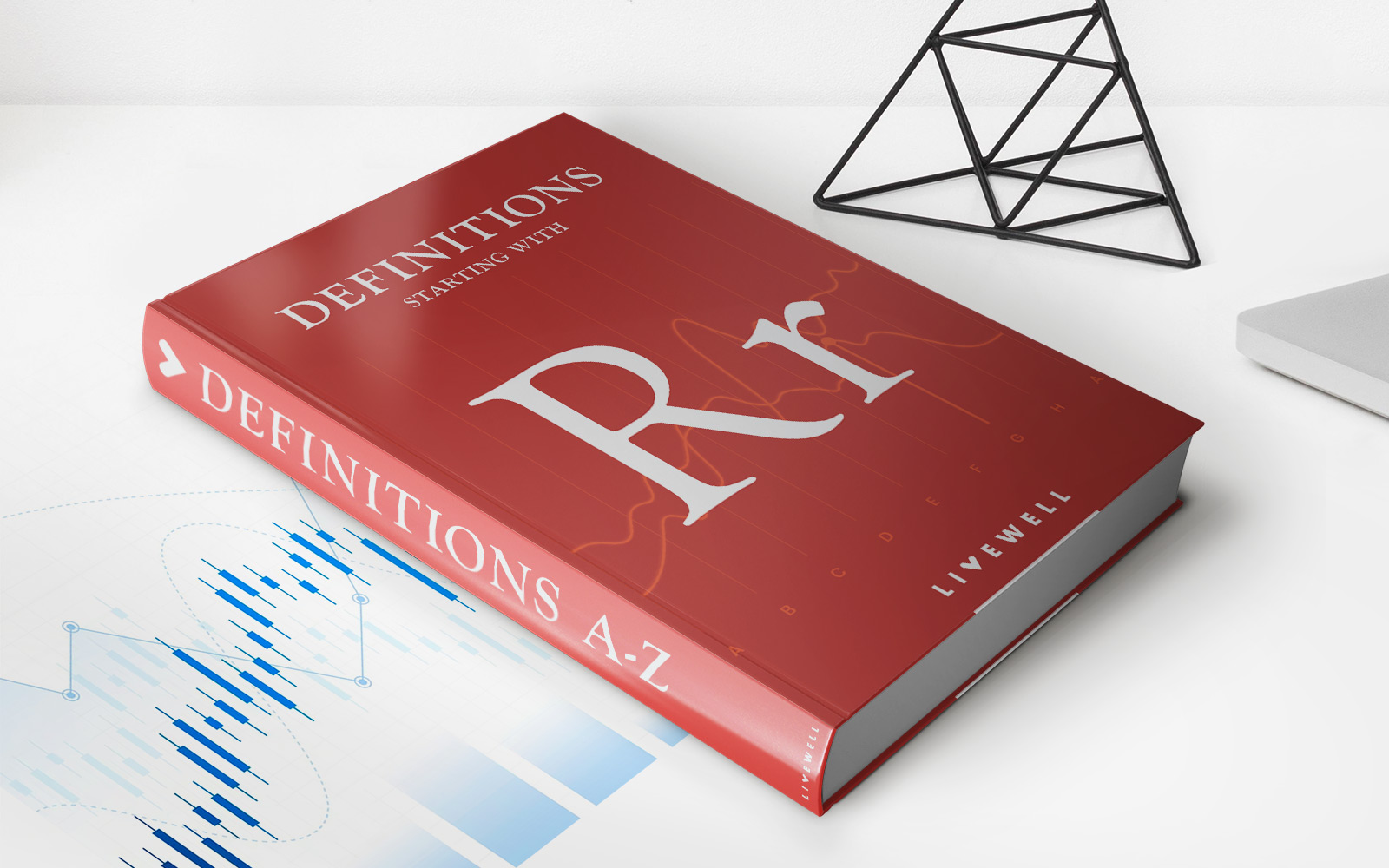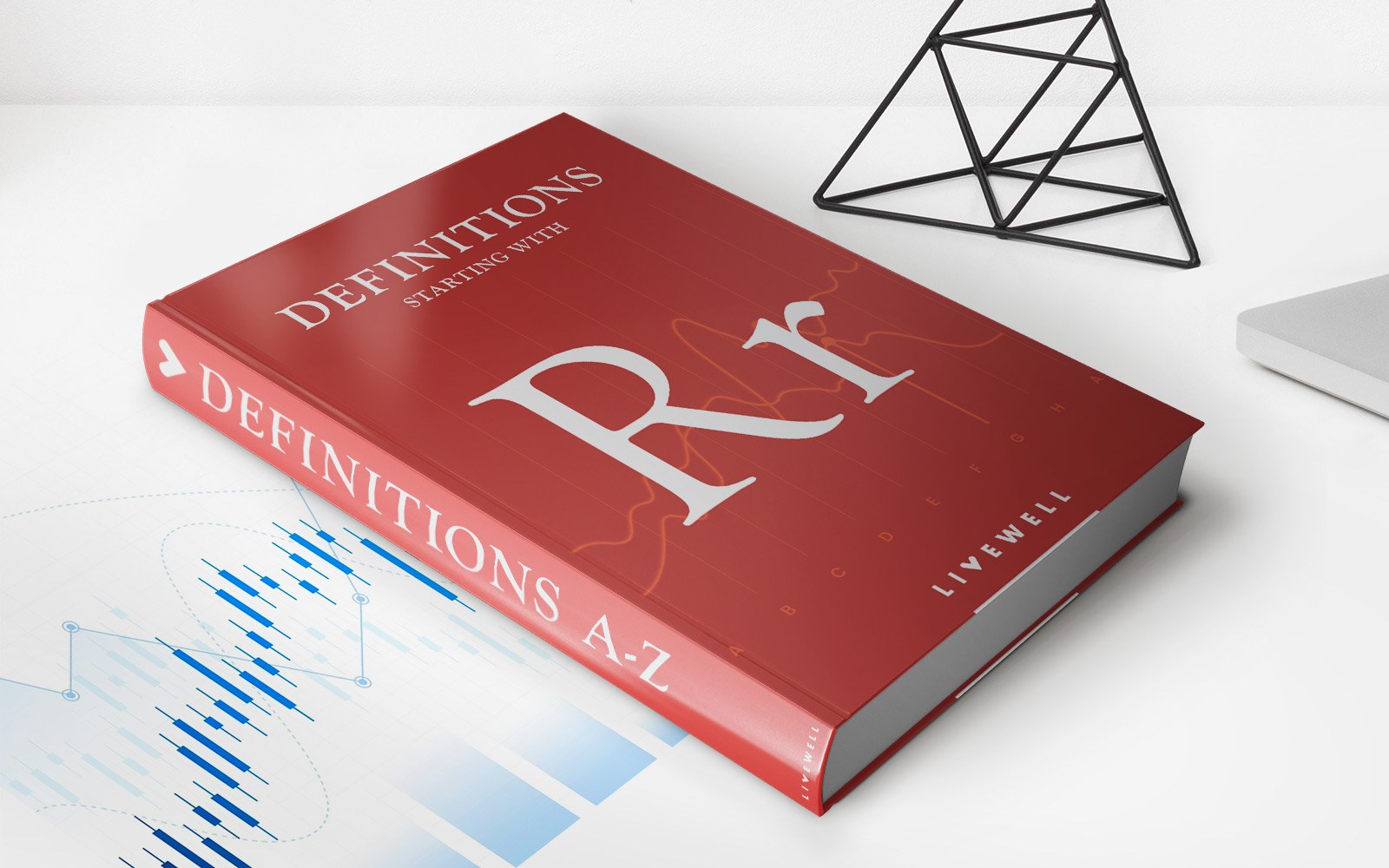Home>Finance>What Is The Replacement Rule In Life Insurance?


Finance
What Is The Replacement Rule In Life Insurance?
Published: October 14, 2023
Learn about the replacement rule in life insurance and how it affects your finances. Find out what you need to know to make informed decisions.
(Many of the links in this article redirect to a specific reviewed product. Your purchase of these products through affiliate links helps to generate commission for LiveWell, at no extra cost. Learn more)
Table of Contents
- Introduction
- Understanding Life Insurance Replacement
- What is the Replacement Rule in Life Insurance?
- When Does the Replacement Rule Apply?
- Steps Involved in the Replacement Rule Process
- The Importance of the Replacement Rule in Protecting Consumers
- Potential Consequences of Violating the Replacement Rule
- Exceptions to the Replacement Rule
- Conclusion
Introduction
Life insurance is a crucial financial tool that provides individuals with peace of mind, knowing that their loved ones will be financially protected in the event of their passing. However, there are instances where policyholders may decide to replace their existing life insurance policy with a new one that better suits their evolving needs. This process is known as life insurance replacement.
Life insurance replacement involves canceling an existing life insurance policy and purchasing a new one to take its place. While it may seem like a straightforward decision, there are several factors to consider, including the impact on coverage, premiums, and potential tax implications.
One of the key regulations governing life insurance replacement is the Replacement Rule. The Replacement Rule is a set of guidelines developed by insurance regulatory bodies to protect consumers from unscrupulous practices and ensure that they are fully informed about the potential consequences of replacing their life insurance policies.
In this article, we will delve into the Replacement Rule in life insurance, understanding its purpose, when it applies, and the steps involved in the replacement process. We will also explore the importance of the Replacement Rule in protecting consumers and the potential consequences of violating this regulation. Finally, we will highlight any exceptions to the Replacement Rule that might provide flexibility in certain situations.
Understanding Life Insurance Replacement
Life insurance replacement occurs when a policyholder decides to terminate an existing life insurance policy and purchase a new one. There are various reasons why individuals may consider replacing their policies, such as seeking better coverage, adjusting premiums, or taking advantage of new features or benefits offered by different insurance providers.
When contemplating life insurance replacement, it’s important to evaluate the potential advantages and disadvantages. By carefully considering these factors, policyholders can make informed decisions that align with their long-term financial goals.
One advantage of life insurance replacement is the opportunity to secure improved coverage. As individuals go through different stages of life, their insurance needs may change. For example, a policyholder who initially purchased a policy to protect their young family may later require additional coverage as their financial responsibilities grow. By replacing the existing policy, they can ensure that their loved ones are adequately protected.
Another reason for life insurance replacement is the potential for lower premiums. Insurance companies adjust their rates based on various factors, including age, health conditions, and lifestyle choices. If a policyholder’s circumstances have changed, such as improved health or kicking a smoking habit, they may be eligible for better rates from a different insurer. By pursuing life insurance replacement, they can potentially save money on premiums while maintaining the desired coverage amount.
However, it’s essential to recognize the potential drawbacks of life insurance replacement as well. One significant consideration is the impact on the policy’s cash value. Cash value is a feature offered by certain types of life insurance policies, such as whole life or universal life, where a portion of the premium payments accumulates over time. When replacing a policy, the policyholder may forfeit the cash value built up in the existing policy, restarting the accumulation process with the new policy.
Additionally, policyholders should take into account the potential tax implications of life insurance replacement. The surrender of an existing policy can trigger taxable events if there is a gain in the cash value. It is crucial to consult with a tax professional or financial advisor to fully understand the tax consequences before proceeding with a replacement.
Overall, life insurance replacement is a decision that should be carefully considered and evaluated. By weighing the advantages and disadvantages, policyholders can make informed choices that align with their changing needs and long-term financial objectives.
What is the Replacement Rule in Life Insurance?
The Replacement Rule in life insurance is a regulatory requirement designed to protect consumers from unethical practices and ensure that they understand the impact of replacing their existing life insurance policies. It is enforced by insurance regulatory bodies to safeguard the best interests of policyholders.
The Replacement Rule sets forth specific guidelines that insurance companies and agents must follow when recommending or facilitating the replacement of a life insurance policy. These guidelines aim to ensure transparency, fair practices, and consumer awareness throughout the replacement process.
Under the Replacement Rule, insurance professionals are required to provide policyholders with a comprehensive comparison of the existing policy and the proposed replacement policy. This comparison should highlight the key features, benefits, as well as the costs and risks associated with each option. The objective is to enable policyholders to make informed decisions based on a clear understanding of the differences between their current policy and the replacement policy.
Furthermore, the Replacement Rule stipulates that policyholders must be provided with a written disclosure statement outlining the reasons for the replacement, the costs involved, and the potential consequences of the replacement. This disclosure statement allows policyholders to fully comprehend the implications and make an informed decision without any ambiguity or misleading information.
Insurance companies and agents are also required to provide policyholders with a “Notice Regarding Replacement” form. This form serves as an acknowledgment from the policyholder that they have received the necessary information about the proposed replacement, and it confirms their understanding of the potential impact of the decision.
In addition to these requirements, the Replacement Rule imposes a mandatory waiting period during which the policyholder can review the information provided and consider their options. The duration of this waiting period may vary depending on the insurance regulations in the jurisdiction where the replacement is taking place.
By implementing the Replacement Rule, insurance regulators aim to protect policyholders from being coerced or misled into making hasty decisions that may not be in their best interest. The rule ensures that policyholders have access to all relevant information, allowing them to make decisions that align with their financial goals and needs.
When Does the Replacement Rule Apply?
The Replacement Rule in life insurance applies in specific situations where a policyholder is considering replacing their existing life insurance policy with a new one. It is crucial to understand when the Replacement Rule comes into effect to ensure compliance with the regulatory requirements.
The Replacement Rule typically applies when four conditions are met:
- Existing Policy is Replaced: The policyholder intends to terminate the current life insurance policy and replace it with a new policy.
- New Policy is Acquired: The policyholder plans to purchase a new life insurance policy from a different insurer or the same insurer.
- Compensation is Involved: The insurance agent or broker will receive commissions or other forms of compensation for the sale of the new policy.
- Same Insured: The insured individual remains the same for both the existing and the new policy.
When these conditions are met, the Replacement Rule applies, and insurance professionals must adhere to the regulatory guidelines to ensure transparency and consumer protection.
It’s important to note that the Replacement Rule may not apply in certain scenarios. For example, if the existing policy is a term life insurance policy nearing its expiration and the policyholder is simply renewing it without any changes, the Replacement Rule may not be applicable. Similarly, if the existing policy is being modified or the insured individual is changing, it may not fall under the purview of the Replacement Rule.
However, it’s always recommended to consult with an insurance professional or regulatory authority to confirm whether the Replacement Rule applies to a specific situation. Complying with the Replacement Rule ensures that policyholders have access to necessary information, can make informed decisions, and are protected from deceptive or misleading practices in the life insurance replacement process.
Steps Involved in the Replacement Rule Process
The Replacement Rule in life insurance involves a series of steps that insurance professionals must follow when assisting policyholders with the replacement of their existing life insurance policies. These steps are designed to ensure transparency, consumer protection, and informed decision-making. Let’s explore the typical process involved in complying with the Replacement Rule:
- Evaluation: The insurance professional evaluates the policyholder’s current life insurance policy, taking into account factors such as coverage amount, premiums, features, and any potential benefits or drawbacks.
- Recommendation: Based on the evaluation, the insurance professional makes a recommendation for a new life insurance policy that better aligns with the policyholder’s needs and goals. The recommendation should be clearly documented and explained to the policyholder.
- Comparison: The insurance professional provides a comprehensive comparison between the existing policy and the proposed replacement policy. This includes a breakdown of key features, benefits, premiums, and potential risks associated with both options. The goal is to enable the policyholder to understand the differences and make an informed decision.
- Disclosure: The insurance professional provides the policyholder with a written disclosure statement that outlines the reasons for the replacement, the costs involved, and the potential consequences. This disclosure statement ensures transparency and clarity, allowing the policyholder to fully comprehend the implications of the replacement.
- Waiting Period: The Replacement Rule often requires a waiting period, during which the policyholder can review the recommended replacement policy and the accompanying documentation. The waiting period allows the policyholder sufficient time to consider their options and ask any questions before making a final decision.
- Acknowledgment: The insurance professional obtains a signed “Notice Regarding Replacement” form from the policyholder. This form acknowledges that the policyholder has received the necessary information, understands the potential impact of the replacement, and confirms their intent to proceed.
- Application and Underwriting: If the policyholder decides to move forward with the replacement, the insurance professional assists in completing and submitting the application for the new policy. The application will undergo underwriting, which involves the insurer assessing the policyholder’s risk factors and determining the final terms and premiums for the new policy.
- Pending Period: Once the application and underwriting process is complete, there may be a pending period during which the policyholder’s existing policy remains in effect until the new policy is issued and accepted.
- Effective Date: Once the new policy is approved and accepted by the policyholder, it becomes effective, and the existing policy is terminated. The policyholder is now covered under the terms and conditions of the new policy.
Following these steps helps ensure compliance with the Replacement Rule, protects the policyholder’s interests, and fosters transparency throughout the life insurance replacement process.
The Importance of the Replacement Rule in Protecting Consumers
The Replacement Rule plays a crucial role in protecting consumers during the process of replacing their existing life insurance policies. It establishes guidelines and requirements that insurance professionals must follow to ensure transparency, informed decision-making, and consumer welfare. Here are some key reasons why the Replacement Rule is essential for consumer protection:
Prevention of Unscrupulous Practices: The Replacement Rule acts as a safeguard against unscrupulous practices by insurance professionals. It ensures that policyholders are not coerced or misled into replacing their policies without full knowledge of the consequences. By requiring comprehensive comparisons, disclosures, and waiting periods, the rule prevents deceptive tactics and promotes fair practices.
Transparency and Informed Decision-Making: The Replacement Rule promotes transparency by mandating clear and thorough comparisons between the existing policy and the proposed replacement policy. It ensures that policyholders have a comprehensive understanding of the differences in coverage, benefits, premiums, and potential risks. This empowers consumers to make informed decisions that align with their needs and protects them from making uninformed or hasty choices.
Protection against Unsuitable Replacements: The Replacement Rule serves as a protective measure against unsuitable policy replacements. By requiring insurance professionals to evaluate the policyholder’s current policy and provide a recommendation based on their specific needs and goals, the rule helps prevent policyholders from replacing policies that may not be in their best interest. This protects consumers from potentially voiding valuable benefits or surrendering accumulated cash value unnecessarily.
Clear Understanding of Consequences: The Replacement Rule promotes clarity by mandating written disclosure statements and the provision of key information regarding costs, reasons for replacement, and potential consequences. By ensuring that policyholders are fully aware of the implications of replacing their policies, consumers can make informed decisions while considering the financial impact, tax implications, and any loss of benefits associated with the replacement.
Time for Reflection and Consultation: The waiting period requirement in the Replacement Rule provides policyholders with a valuable opportunity to reflect, evaluate, and seek advice. It allows time for policyholders to review the proposed replacement policy, ask questions, and consult with trusted advisors or family members. This provision protects consumers from making impulsive decisions and encourages them to consider alternative options before finalizing the replacement.
Overall, the Replacement Rule is of paramount importance in protecting consumers in the life insurance industry. It establishes a framework that promotes fairness, transparency, and informed decision-making. By adhering to the rule, insurance professionals ensure that policyholders are well-informed, empowered, and protected while navigating the complex process of replacing their life insurance policies.
Potential Consequences of Violating the Replacement Rule
Violating the Replacement Rule in life insurance can have serious consequences for insurance professionals and companies involved in the replacement process. These consequences are in place to hold them accountable for unethical practices and to protect consumers. Here are some potential repercussions of violating the Replacement Rule:
Regulatory Penalties: Insurance regulatory bodies have the authority to impose penalties and sanctions on insurance professionals and companies who violate the Replacement Rule. These penalties can range from monetary fines to license suspensions or revocations, depending on the severity of the violation. Regulatory bodies take consumer protection seriously and actively enforce the Replacement Rule to maintain fair practices within the industry.
Damaged Professional Reputation: Violating the Replacement Rule can seriously damage the professional reputation of insurance professionals and insurance companies. Word travels quickly within the industry, and disciplinary actions and ethical violations could harm their credibility and make it difficult to cultivate trust with future clients. A tarnished reputation can have long-lasting negative effects on their ability to attract new clients and retain existing ones.
Legal Consequences: In more severe cases, policyholders who have been harmed by a violation of the Replacement Rule may choose to take legal action against the insurance professional or company involved. This can lead to costly legal battles and potential financial settlements or judgments. Legal consequences can include compensation for any financial losses, punitive damages, and legal fees.
Loss of Consumer Trust: Violating the Replacement Rule erodes consumer trust, not only in the specific insurance professional or company but in the industry as a whole. When consumers perceive that their interests have not been safeguarded, it creates doubts and skepticism about the integrity of insurance professionals and the industry. Losing consumer trust can result in decreased business opportunities, difficulty acquiring new clients, and damage to the overall reputation of the insurance industry.
Negative Impact on Policyholders: The consequences of violating the Replacement Rule can directly impact policyholders who have replaced their policies under inaccurate or misleading information. They may suffer financial losses, bear additional costs due to higher premiums or loss of benefits, or face challenges in securing appropriate coverage. This undermines the very purpose of life insurance, which is to provide financial protection and peace of mind to policyholders and their families.
Ensuring Compliance and Consumer Protection: It is in the best interest of insurance professionals and companies to comply with the Replacement Rule to avoid these potential consequences. By ensuring compliance, they can uphold their professional integrity, build trust with consumers, and contribute to a fair and transparent life insurance market that prioritizes consumer protection above all.
Exceptions to the Replacement Rule
While the Replacement Rule in life insurance is a vital regulatory requirement, there are certain exceptions that allow for flexibility in specific situations. These exceptions recognize that certain policy changes or replacements may not require the same level of scrutiny as a full policy replacement. Here are some common exceptions to the Replacement Rule:
Automatic Policy Conversions: In some cases, insurance companies offer automatic conversions of policies without triggering the Replacement Rule. For example, if a term life insurance policy automatically converts to a permanent life insurance policy at the end of the term, this conversion may not fall under the purview of the Replacement Rule. The key is that the new policy remains with the same insurer and the insured individual’s coverage continues without significant changes.
Internal Exchanges: Insurance companies may allow policyholders to exchange their existing policies for different policies offered within their product lineup. These internal exchanges usually do not require compliance with the Replacement Rule as the policyholder remains with the same insurer. However, policyholders should still carefully assess the new policy’s terms, benefits, and costs to ensure it aligns with their needs and objectives.
Change in Insured: If there is a change in the insured individual, such as transferring ownership of a policy or changing the primary insured, it may not trigger the Replacement Rule. These changes generally focus on administrative modifications rather than full policy replacements. However, policyholders should review such changes with their insurance professionals to ensure they understand any potential consequences.
Modifications to an Existing Policy: Making modifications to an existing life insurance policy, such as changing coverage amounts or adding riders, may not fall under the Replacement Rule. If the changes do not result in the termination of the existing policy and the creation of an entirely new policy, they may be considered adjustments rather than replacements. However, policyholders should carefully review any modifications to ensure they align with their current needs and objectives.
It is crucial to note that the specific exceptions to the Replacement Rule can vary depending on the jurisdiction and the regulations in place. Policyholders and insurance professionals should consult with local insurance authorities or legal advisors to confirm the specific exceptions applicable in their region.
While these exceptions provide flexibility in certain scenarios, it is still essential for policyholders to exercise caution and fully understand the implications of any changes they make to their life insurance policies. Consulting with a trusted insurance professional can help navigate the nuances of these exceptions and ensure the best decisions are made based on individual circumstances.
Conclusion
The Replacement Rule is a crucial aspect of the life insurance industry that aims to protect consumers during the process of replacing their existing policies. This regulatory requirement ensures transparency, informed decision-making, and consumer welfare. By following the Replacement Rule, insurance professionals promote fair practices, prevent unscrupulous behavior, and prioritize the best interests of policyholders.
Understanding the Replacement Rule is essential for both insurance professionals and policyholders. For insurance professionals, compliance with the rule helps them maintain their professional reputation, avoid regulatory penalties, and build trust with clients. By adhering to the rule, insurance professionals demonstrate their commitment to transparency, fairness, and consumer protection.
For policyholders, the Replacement Rule provides important safeguards and peace of mind. It ensures that they have access to comprehensive information, comparisons, and disclosures when considering the replacement of their life insurance policies. This empowers policyholders to make informed decisions that align with their changing needs, financial goals, and risk tolerance.
While the Replacement Rule sets clear guidelines for policy replacements, it is essential for insurance professionals and policyholders to be aware of any exceptions or unique regulations that may apply in their specific jurisdiction. Staying informed and seeking guidance from trusted insurance professionals or regulatory authorities can help navigate the complexities of the Replacement Rule effectively.
In summary, the Replacement Rule in life insurance serves as a crucial safeguard for consumers. It ensures transparency, prevents unethical practices, and promotes informed decision-making. By adhering to the Replacement Rule, insurance professionals and policyholders can foster a trustworthy and consumer-centric life insurance industry, where policyholders’ interests remain at the forefront.














